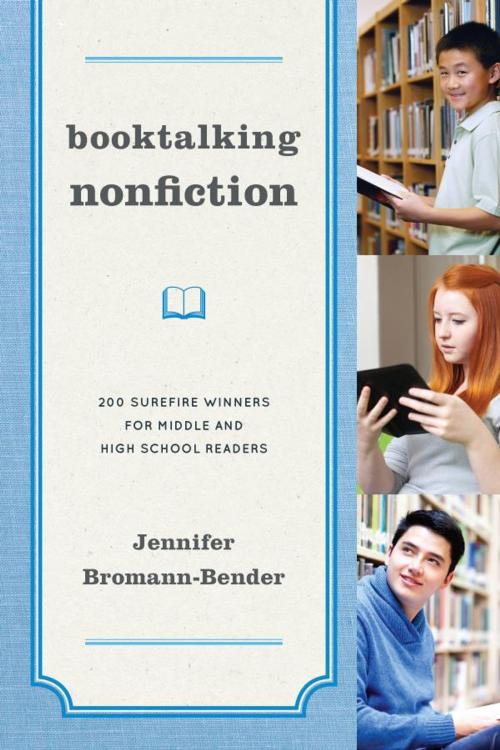Booktalking Nonfiction
200 Surefire Winners for Middle and High School Readers
Nonfiction, Reference & Language, Language Arts, Library & Information Services, Education & Teaching, Teaching, Teaching Methods| Author: | Jennifer Bromann-Bender | ISBN: | 9780810888098 |
| Publisher: | Scarecrow Press | Publication: | December 20, 2013 |
| Imprint: | Scarecrow Press | Language: | English |
| Author: | Jennifer Bromann-Bender |
| ISBN: | 9780810888098 |
| Publisher: | Scarecrow Press |
| Publication: | December 20, 2013 |
| Imprint: | Scarecrow Press |
| Language: | English |
Booktalking Nonfiction: 200 Sure-Fire Winners for Middle and High School Readers will provide an introduction to selecting and writing booktalks for nonfiction books with a focus on unique informational texts and biographies and autobiographies. A booktalk is a summary of a book presented in a way that would interest someone in reading the book described.
Why non-fiction? Because the Common Core Standards Initiative, which most states have adopted, requires that 70% of the materials students read be from the category of informational texts it is especially important to focus on nonfiction when sharing books with students. Here’s everything you need to do just that.
Chapters cover selecting, writing, preparing, and presenting booktalks, special tips for high-interest, low-level books, and using non-fiction in the library and the classroom. Two hundred ready-to-present booktalks arranged by genre are also included. Genres include animals, famous people, sports, crime and serial killers, movies and television, religion, war, history, and the supernatural.
Booktalking Nonfiction: 200 Sure-Fire Winners for Middle and High School Readers will provide an introduction to selecting and writing booktalks for nonfiction books with a focus on unique informational texts and biographies and autobiographies. A booktalk is a summary of a book presented in a way that would interest someone in reading the book described.
Why non-fiction? Because the Common Core Standards Initiative, which most states have adopted, requires that 70% of the materials students read be from the category of informational texts it is especially important to focus on nonfiction when sharing books with students. Here’s everything you need to do just that.
Chapters cover selecting, writing, preparing, and presenting booktalks, special tips for high-interest, low-level books, and using non-fiction in the library and the classroom. Two hundred ready-to-present booktalks arranged by genre are also included. Genres include animals, famous people, sports, crime and serial killers, movies and television, religion, war, history, and the supernatural.















